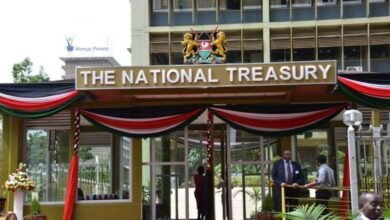
The Agricultural sector has remained to be the largest contributor to Kenya’s Gross Domestic Product (GDP), a sector President Uhuru Kenyatta has prioritised in his key development pillar under the “Big 4 agenda” on food and nutritional security.
To sustain the sector amidst raging drought and short rains, the government has allocated Ksh.2.7 billion to the fertilizer subsidy kitty to cushion farmers from the high cost of fertilizer.
It is an addition to Ksh.5.734 billion the state has already set aside to subsidize 114,000MT (2,280,000 x 50kg bags) for farmers growing food crops spanning 1.13 million acres.
“These government agencies will sell the fertilizers at agreed subsidized prices to stabilize the prices of critical fertilizers to the Kenyan farmer,” said Munya in a statement on April 1.
Treasury Cabinet Secretary Ukur Yatani said the Government has continued to support large scale production of staple food; expanded irrigation schemes; increased access to agricultural inputs; and supported 22 smallholder farmers to sustainably produce and market various commodities.
CS Yatani told the Members of Parliament that the price of fertilizer has more than doubled in the last year and is still rising.
Kenya’s mitigation comes against the back of an uptick in world fertilizer price, a factor that has been anchored on the effects of the coronavirus pandemic.
CS Munya acknowledged that the continued Russia invasion of Ukraine has also exacerbated the rise in commodity prices.
This time last year, a 50kg bag of DAP fertilizer was retailing at Ksh.3,200 and its price increased by almost two folds to Ksh.6,000 today.
With the Ksh.5.7 billion subsidy fund already in place, the Ministry of Agriculture has broken down the retail price for different type of fertilizer as follow per 50kg bag;
A 50kg bag of DAP will retail at Ksh.2,800
CAN – Ksh.1,950
UREA – Ksh.2,700
NPK – Ksh.3,000
MOP – Ksh.2,500
Sulphate of Ammonia – Ksh.2,500.
The country’s economy is estimated to stabilize at 6 percent in 2022 aided by recovery in the Agriculture, Industry, and service sectors.





